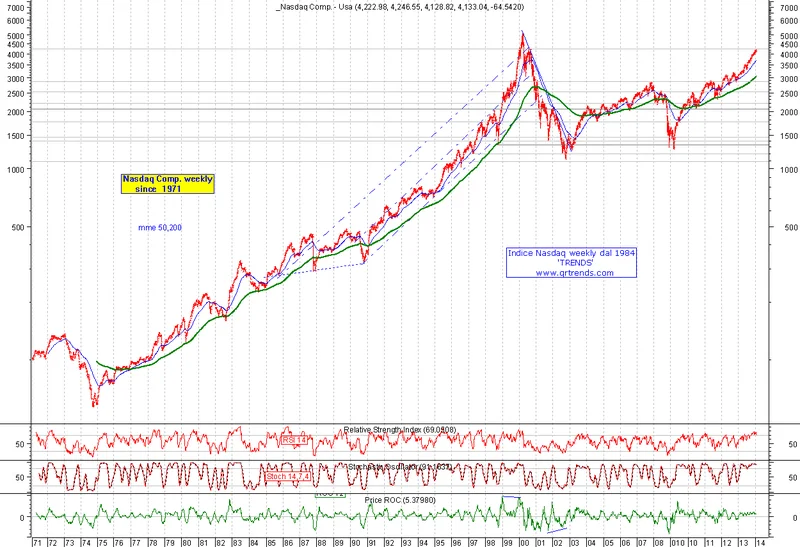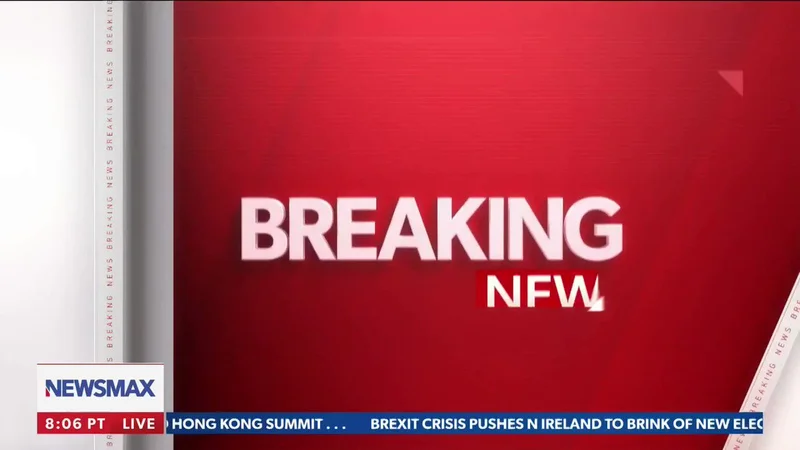Nasdaq Composite Rises: What's Driving the Rally and Key Stock Movers
Don't be fooled by the green on your screen. Today’s market surge, while superficially impressive, is a textbook example of a top-heavy illusion. The Nasdaq Composite jumps 2%, the S&P 500 adds a respectable 1.2%, and the financial news cycle dutifully reports on the Stock Market Today: Dow, S&P 500, Nasdaq Open Up; Nvidia, Tesla, More Movers; Shutdown Hope.
But looking at the headline indices today is like judging the health of a forest by looking at a handful of giant, genetically engineered sequoias while ignoring the thousands of withered, struggling trees at their base. The real story isn't the rally; it's the profound lack of participation in it.
The Seven Pillars of a Hollow Market
Let’s dissect the numbers. The Dow Jones Industrial Average was up about 170 points—or 0.4%, to be more exact. That’s a tepid gain, barely registering as a vote of confidence. The real engine for the S&P and Nasdaq was, predictably, the small cohort of mega-cap tech stocks known as the "Magnificent Seven."
Every single one of them posted gains of 1.7% or more. Nvidia, the market's AI-anointed king, led the charge with a 3.9% jump. Alphabet and Tesla followed, both clearing the 3% hurdle. This is where the entire narrative of a "market rally" was manufactured. These seven stocks have such an immense weighting in the major indices that their performance can completely mask weakness elsewhere.
And the weakness is undeniable. The most critical data point of the day, one that was buried in most reports, is that market breadth was negative. This means that despite the major indices climbing, more individual stocks listed on the exchange were declining in value than were advancing. It's a glaring discrepancy. This market isn't a powerful rising tide lifting all boats; it's a rescue operation where a few mega-yachts are being airlifted out of the water while the rest of the fleet is taking on water.

I've looked at hundreds of market data sets over the years, and this particular divergence between index performance and underlying breadth is a classic signal of poor health. It suggests a lack of conviction from a broad base of investors and an over-reliance on a very crowded, very narrow trade. What happens when the narrative fuel for these seven stocks runs out? Can seven companies truly carry the weight of the entire US economy on their shoulders indefinitely?
Chasing the Same Old Story
The commentary from Wall Street analysts only reinforces this thesis of a momentum-driven, not fundamentally-driven, rally. Chris Larkin at E*TRADE correctly identifies that "Tech continues to be the story for the stock market," but his follow-up is the real tell: sustaining the bounce may hinge on whether the "AI leaders regain momentum." He doesn't mention broad economic recovery or strengthening corporate earnings across the board. It’s all about momentum in a handful of names.
Mizuho’s Jordan Klein is even more direct, suggesting investors were simply waiting for an "excuse to buy last week’s dip." His expectation? "MORE OF THE SAME in terms of what gets bought and chased most aggressively."
This isn't analysis of a healthy market; it's a diagnosis of herd behavior. The shutdown news wasn't a fundamental catalyst that suddenly made small-cap industrials or regional banks more valuable. It was simply the starting pistol for a race back into the same five or six stocks that have defined the entire year. The market is acting like an engine where only a few cylinders are firing. It makes a lot of noise and lurches forward, but the strain on those few working parts is immense, and the rest of the machine is just dead weight.
The core question investors should be asking isn't whether the shutdown will be averted. It's whether the foundation of this market is solid or simply a mirage created by the gravitational pull of a few trillion-dollar companies. Is this a sustainable advance or just the last, frantic gasp of a dying bull run?
A Concentration Risk Mirage
The data doesn't point to a market recovery. It points to a flight to a handful of perceived safe havens masquerading as a rally. The negative breadth is the signal; the Nasdaq's 2% gain is the noise. This isn't strength. It's fragility, concentrated in a handful of stocks that everyone has already bought. We are celebrating the fact that the seven most popular kids in school are still popular, while ignoring that the rest of the student body is heading for the exits. This is not a sustainable ecosystem, and the risk being priced in is, from my perspective, dangerously low.
-

Warren Buffett's OXY Stock Play: The Latest Drama, Buffett's Angle, and Why You Shouldn't Believe the Hype
Solet'sgetthisstraight.Occide...
-

The Business of Plasma Donation: How the Process Works and Who the Key Players Are
Theterm"plasma"suffersfromas...
-

newsmax: What's going on?
[GeneratedTitle]:AreWeReallyS...
-

Mantra: A Quantitative Look at the Psychology and Actual Impact
AnAnalysisof'Mantra'asaFunct...
-

Bittensor: The Decentralized AI Vision and Why Wall Street is Suddenly Watching
Ofcourse.Hereisthefeatureart...
- Search
- Recently Published
-
- Dijon: Unpacking the Artist, His Vision, and the SNL Buzz
- Satoshi Nakamoto: Unraveling the Visionary, Defining 'Satoshi,' and Bitcoin's Future
- Cook County Treasurer: Property Tax Bills, Payments, & Why It's Such a Pain
- Allora: The Next Paradigm Shift and What It Means for Humanity
- IRS Relief Payment 2025: Will You Actually See a Direct Deposit?
- The Great Hamburger Collapse: The Real Reason They're Failing and Who's Next
- Nasdaq Composite Rises: What's Driving the Rally and Key Stock Movers
- Zcash's Price Surge: An Analysis of Its Price, Key Endorsements, and Future Outlook
- Pudgy Penguins: DreamWorks Partnership and Crypto Presale
- primerica: What we know so far
- Tag list
-
- carbon trading (2)
- Blockchain (11)
- Decentralization (5)
- Smart Contracts (4)
- Cryptocurrency (26)
- DeFi (5)
- Bitcoin (29)
- Trump (5)
- Ethereum (8)
- Pudgy Penguins (6)
- NFT (5)
- Solana (5)
- cryptocurrency (6)
- XRP (3)
- Airdrop (3)
- MicroStrategy (3)
- Stablecoin (3)
- Digital Assets (3)
- PENGU (3)
- Plasma (5)
- Zcash (6)
- Aster (4)
- investment advisor (4)
- crypto exchange binance (3)
- SX Network (3)
